
When was pickleball invented? This fun sport has taken the world by storm, but its origins are just as interesting. Pickleball started in 1965 on Bainbridge Island, Washington. A few dads wanted to entertain their kids during summer break. They combined elements from tennis, badminton, and ping-pong to create a game that anyone could play.
Today, pickleball is loved by people of all ages. It’s easy to learn and great for socializing. With its rising popularity, many are curious about its history and how it became a favorite pastime. Join us as we dive deeper into the fascinating story of pickleball and discover why it’s capturing hearts everywhere.
Table of Contents
Key Takeaways
- Pickleball was invented in 1965, making it a relatively new sport that has quickly gained popularity.
- The game started as a fun family activity and has evolved into a competitive sport enjoyed by many.
- Key milestones, like the formation of the USA Pickleball Association, helped legitimize and grow the sport.
- Official recognition by governing bodies has led to more organized competitions and events.
- The equipment used in pickleball, such as paddles and balls, has improved over time, enhancing gameplay.
- Understanding court specifications can help players play better and enjoy the game more.
The Birth of Pickleball

Summer of 1965
The summer of 1965 marked a significant moment in sports history. During this time, Joel Pritchard and his family wanted to play badminton. They found that the equipment was missing. Instead of giving up, they decided to improvise. They grabbed some ping-pong paddles and a perforated plastic ball. This decision led to the creation of a new game.
Pritchard and his friends set up a net on an old badminton court. They played with the paddles and ball, enjoying their time together. The fun they had sparked an idea for a new sport. This was the beginning of what we now know as pickleball.
First Permanent Court
Bob O’Brian, a close friend of Joel Pritchard, played an important role in this story. He helped build the first permanent pickleball court. This court was located at Pritchard’s home in Bainbridge Island, Washington. The construction took place shortly after the initial games were played.
O’Brian’s efforts made it easier for people to play regularly. The permanent court allowed more players to join in on the fun. It became a gathering place for families and friends. Soon, others began to notice this new game.
Growth of Pickleball
As word spread about this exciting game, more people wanted to play. By the late 1960s, pickleball started gaining popularity across the United States. It attracted players of all ages. Many enjoyed its simple rules and easy setup.
In 1972, the first official pickleball organization was formed. This group aimed to promote the game further and organize events. The inaugural world pickleball games took place soon after. These events helped showcase talented pickleball players from around the country.
Pickleball Community
The pickleball community grew quickly over the years. Local clubs formed in many areas, allowing more people to participate. Players enjoyed friendly competition and social gatherings. The game became famous for its welcoming atmosphere.
Today, pickleball is played on courts worldwide. It continues to attract new fans every day. Players appreciate its mix of skill and fun. Many regard it as one of the fastest-growing sports in America.
Early Development and Growth

Family-Friendly Rules
Original rules of pickleball came from badminton. The game aimed to be fun for families. Players could enjoy it together. The size of the court and the net height were set to make it easy. This allowed kids and adults to play without much trouble. The plastic ball used was lightweight. It made the game more enjoyable, especially for beginners. Families could gather in the backyard or at a local park. Many memories were created as parents played with their children.
First Tournament
The first known pickleball tournament took place in 1976. This event marked a big step for the sport. Many players joined to show their skills. They came from different places, eager to compete. The tournament helped spread the word about pickleball. More people began to learn about it. The event also brought communities together, encouraging neighbors to join in.
Sid Williams’ Role
Sid Williams played a key role in early tournaments. He worked hard to promote the sport. His efforts helped organize events that attracted many players. Williams wanted everyone to know about pickleball’s fun nature. He believed it could bring people together, just like his own family did when they played at home.
Williams’ passion for the game helped create a strong community around it. He encouraged players to share their love for pickleball with others. This led to more people picking up paddles and playing.
True Stories of Pickleball
Many stories began to surface about how families enjoyed pickleball together. One true story involves a father, his dog, and neighbors playing on an island. They set up a net using leftover materials from their houses. The laughter of kids and dogs filled the air as they played matches against each other.
Another story features a group of friends named Barney and Ann who loved playing after dinner. They often invited others over to join them in friendly games. Their house became a gathering spot for many who wanted to learn the game.
These true stories highlight how pickleball grew from simple beginnings into a beloved sport for all ages.
Key Milestones in Pickleball History
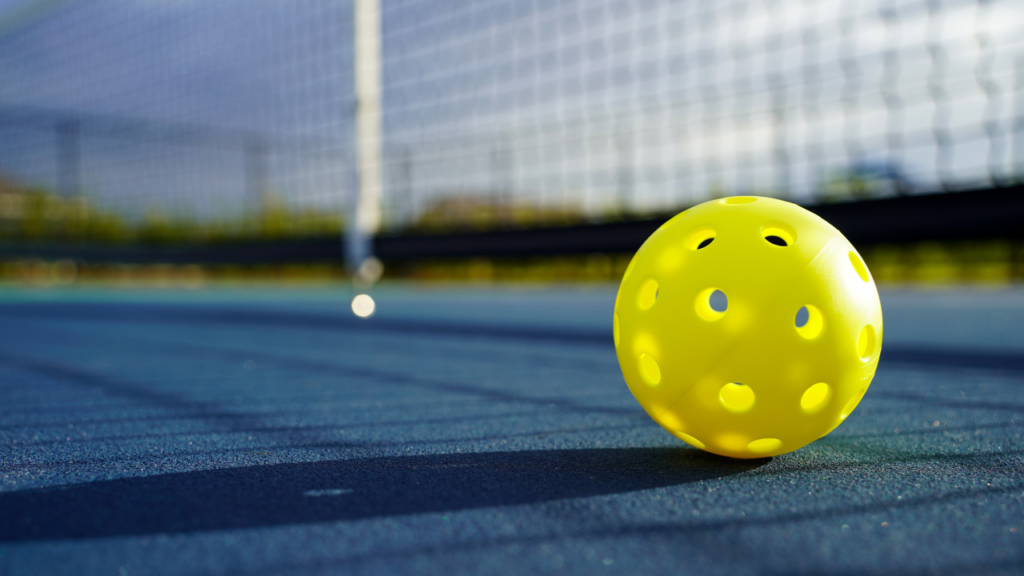
U.S.A.P.A. Formation
The United States Amateur Pickleball Association (U.S.A.P.A.) was established in 1984. This organization helped to promote and grow the sport across the country. It provided a structure for players and clubs. The U.S.A.P.A. also worked to standardize rules and regulations.
Many people joined pickleball because of this organization. They wanted to learn more about the game. The U.S.A.P.A. organized tournaments and events. These activities brought players together and created a sense of community.
Rulebook Release
March 1984 marked an important moment in pickleball history. The first official rulebook for pickleball was published. This rulebook outlined how to play the game properly. It included details on scoring, serving, and court dimensions.
Having a rulebook made it easier for new players to understand the game. It also helped standardize play across different regions. Players could now compete with a clear understanding of the rules. This led to more organized events and competitions.
Paddle Innovation
Arlen Paranto created the first composite paddle in 1984. This innovation changed how people played pickleball. Before this, paddles were mostly made from wood or simple materials. The composite paddle offered better control and power.
Players noticed a difference when using these new paddles. They could hit the ball harder and with more accuracy. This advancement attracted more players to the sport. Many began to see pickleball as a serious competition, not just a fun game.
Growth of Popularity
Throughout the 1980s, pickleball continued to grow in popularity. More people discovered the game through local parks and recreation centers. Schools began to introduce pickleball in physical education classes.
By 1990, there were many regional tournaments happening across the United States. The sport gained attention from various media outlets. Articles about pickleball started appearing in newspapers and magazines.
National Championships
In 2009, the first national championship was held in Buckeye, Arizona. This event showcased top players from around the country. It marked a significant step in solidifying pickleball as a competitive sport.
The growth of pickleball has not slowed down since then. Today, millions of people play across North America and beyond. New clubs form every year, and tournaments attract large crowds.
Official Recognition by Governing Bodies
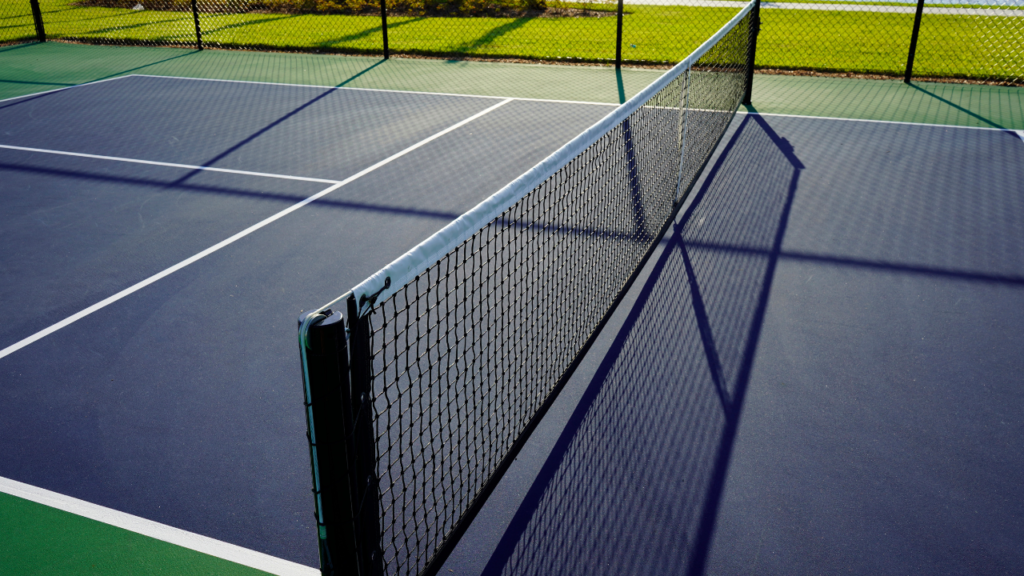
U.S.A.P.A. Formation
The USA Pickleball Association (U.S.A.P.A.) was founded in 2005. This organization aimed to promote pickleball across the United States. Locals wanted a way to connect and grow the sport. The U.S.A.P.A. played a vital role in this effort.
The U.S.A.P.A. established rules for the game. These rules helped everyone understand how to play. Having standardized rules made it easier for new players to join. It also helped in organizing competitions.
Standardized Rules
Standardized rules were essential for pickleball’s growth. Before the U.S.A.P.A., each group had different ways of playing. This led to confusion among players. The U.S.A.P.A. introduced clear guidelines that everyone could follow.
These rules included details about court size, scoring, and equipment. For example, the court is 20 feet wide and 44 feet long for doubles matches. The net height is 36 inches at the ends and 34 inches in the middle. This consistency allowed players to compete fairly.
Growing Acceptance
Pickleball gained popularity over the years. Many sports organizations recognized its potential. The National Senior Games Association included pickleball as an official event in 2003. This decision brought more attention to the sport.
In 2010, the USA Pickleball Association hosted its first national tournament. Attendance grew rapidly, showing the sport’s appeal. Players from all over came to compete and enjoy the game.
Universities began offering pickleball classes too. Schools across the country started introducing it into their physical education programs. This further increased interest among younger players.
Local Communities
Local communities embraced pickleball as well. Parks and recreation departments built courts in neighborhoods. They organized leagues for both beginners and experienced players. Many people found joy in playing together.
Pickleball became a social activity for families and friends. It was easy to learn, making it popular with all ages. The sport encouraged teamwork and friendly competition.
Continued Growth
The U.S.A.P.A.’s efforts continue today. They work on promoting pickleball internationally as well. More countries are starting to recognize its value as a sport.
As pickleball evolves, so do its rules and regulations. The U.S.A.P.A. regularly updates its guidelines based on player feedback and trends in gameplay.
Growth and Popularity of the Sport

Expansion Across States
Pickleball grew quickly after its invention in 1965. By the 2000s, it reached all 50 states. People of all ages started to play. Schools and community centers added pickleball courts. This made it easier for many to join in. Families began playing together. Friends organized games at local parks. The sport became a fun way to stay active.
Online Resources
In 2003, the first pickleball website launched. It was called Pickleball Stuff. This site provided valuable information for players. It offered rules, tips, and equipment suggestions. Players could also find local tournaments and events. The website helped connect players across the country. It allowed them to share their experiences and stories about the sport.
Growing Communities
The number of people playing pickleball increased each year. Many joined local teams or clubs. Communities organized events like tournaments and social gatherings. These activities brought people together and built friendships. The sport’s appeal continued to rise as more players engaged with it.
Pickleball is easy to learn. It requires minimal equipment, making it accessible for everyone. Many enjoy the friendly competition it offers. As a result, more families started playing together on weekends.
Fun for Everyone
Different age groups found joy in playing pickleball. Young children learned from their parents or grandparents. They played together, creating lasting memories. Older adults enjoyed the low-impact nature of the game. It allowed them to stay active without risking injury.
Pickleball also became popular in retirement communities. Residents formed clubs and played regularly. They enjoyed socializing while staying fit. This trend showed how pickleball suits various lifestyles and abilities.
Events and Tournaments
As interest grew, so did the number of tournaments held nationwide. Local competitions began to pop up everywhere. They drew players from different backgrounds and skill levels. Some even traveled long distances to compete.
These events created excitement around pickleball. Spectators cheered for their favorite players or teams. It fostered a sense of community among fans and participants alike.
By creating opportunities for everyone, pickleball thrived as a sport.
Evolution of Pickleball Equipment
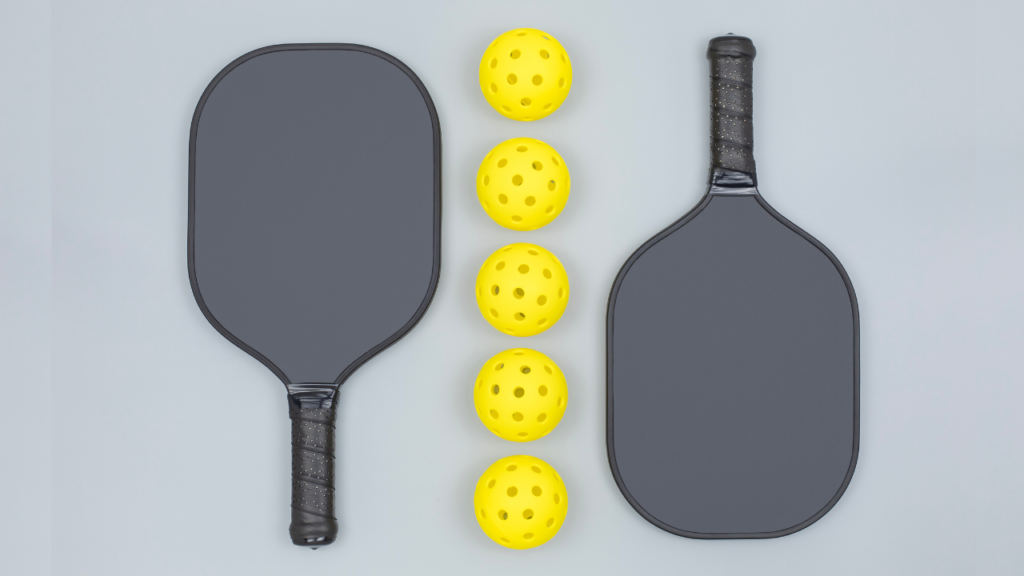
Paddle Transition
Early pickleball paddles were made from wood. These paddles were heavy and less effective. As the sport grew, players wanted better options. In the 1980s, manufacturers started making paddles from lighter materials. This change helped players swing faster and control the ball better.
Today, composite paddles are popular. They use advanced materials like fiberglass and carbon fiber. These materials make paddles lighter and stronger. Players can hit the ball harder without tiring quickly. The transition to composite paddles has changed how the game is played.
Impact on Gameplay
Innovation in equipment has changed gameplay significantly. With lighter paddles, players can react faster. They can also place their shots more accurately. This leads to longer rallies and more exciting matches.
The new technology also helps with player performance. Players can generate more power with less effort. They experience less fatigue during games. This means they can play longer and improve their skills.
Trends in Gear
Pickleball gear has evolved to meet different needs. Recreational players often choose basic pickleball kits that include a paddle and balls. These kits are affordable and easy to find.
Competitive players look for high-performance gear. They want specialized paddles that suit their playing style. Many brands now offer custom options for serious athletes.
Trends show a rise in colorful designs and personalized paddles. Players enjoy expressing their unique style through their equipment. Companies also focus on comfort, making grips softer and easier to hold.
Changes in Court Specifications
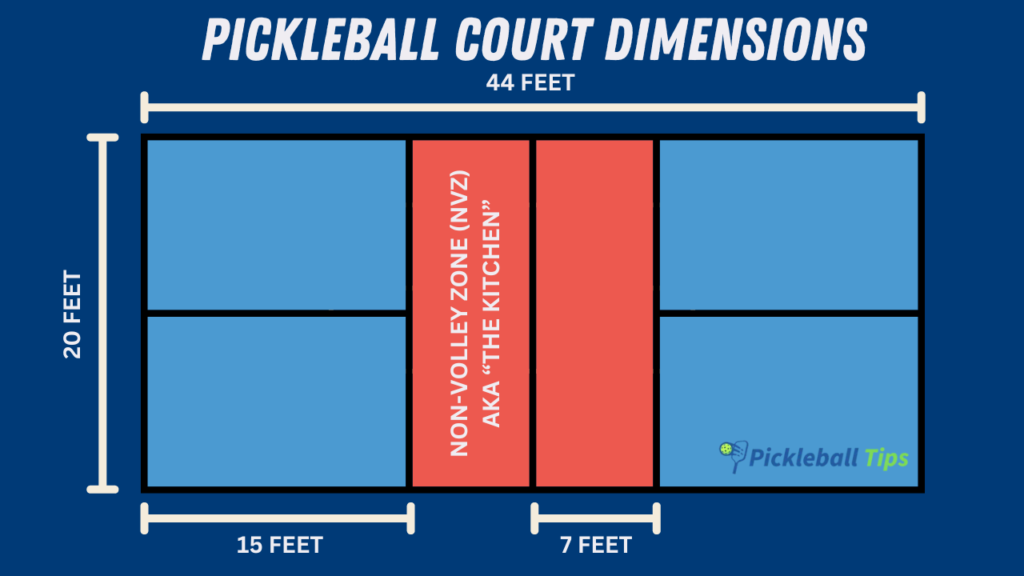
Initial Height
The original net height for pickleball was 60 inches. This height made the game challenging, especially for beginners. Players found it tough to hit the ball over the high net.
In 1975, a change occurred. The net height was adjusted to 36 inches. This alteration made the game more accessible. Players could enjoy longer rallies and have more fun.
Evolving Dimensions
Court dimensions have also changed since the game’s inception. The initial court size was similar to a badminton court. It measured 20 feet wide by 44 feet long. Over time, players noticed that these dimensions did not fit all playing styles.
In 1984, rules were updated. The standard court size became 20 feet wide by 44 feet long for doubles and 20 feet by 34 feet long for singles. This change allowed players to move freely and play better.
Different playing styles require different spaces. Some players prefer fast-paced games, while others enjoy strategic plays. Adjusting the court dimensions helps meet these needs.
Importance of Standardization
Standardized court specifications are crucial for organized play. They ensure that all players compete on equal ground. Without these standards, games can become unfair and chaotic.
Organizations like the USA Pickleball Association provide clear guidelines. These guidelines help maintain consistency in courts across the country. Players know what to expect when they enter a tournament or league match.
Having standardized measurements also aids in promoting the sport. More people can understand how to set up a court correctly. This encourages more communities to build their own pickleball courts.
Clear specifications lead to better training and competition experiences. Players can practice with confidence, knowing they are using proper equipment and dimensions.
Record Keeping
Keeping accurate records of court specifications is important too. Organizations track changes over time to improve gameplay. This data helps in planning future tournaments and events.
Changes in rules often come from player feedback as well. For example, if many players struggle with certain aspects of the game, organizations may consider adjustments.
In summary, understanding these changes in court specifications enhances the game of pickleball. From net heights to overall dimensions, each adjustment serves a purpose. These specifications create a fair and enjoyable experience for everyone involved.
Impact on Gameplay
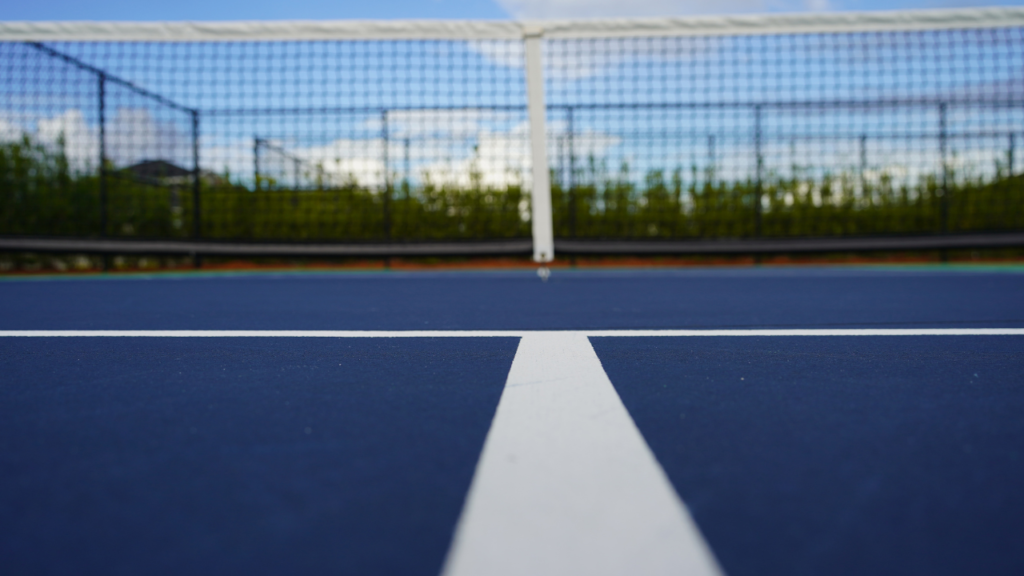
Equipment Changes
Changes in equipment have greatly influenced game strategies. The paddles used in pickleball are lighter than tennis racquets. This allows players to react faster and make quick shots. The balls are also unique, with holes that affect how they move through the air. Players must adjust their techniques based on these differences.
Court specifications have changed too. The smaller court size makes it easier for players to cover ground. This affects how teams play together. They often use strategies that focus on teamwork, rather than relying solely on individual skills. Players can now position themselves better to support each other.
Community Engagement
Community and family play a big role in pickleball’s growth. Many people enjoy playing together. Families can join in, making it a fun activity for all ages. Local parks often host games and tournaments. These events bring people together and create a sense of belonging.
Players often form friendships through the game. They meet regularly to practice or compete. This social aspect keeps the game lively and encourages more participation. As communities grow, so does the interest in pickleball.
Blending Sports Elements
Pickleball combines elements from tennis, badminton, and ping-pong. This mix creates a unique gameplay experience. Players enjoy using different skills that come from these sports. For example, the soft serve from tennis and the quick reflexes needed in ping-pong both apply here.
The blend of sports also affects player dynamics. Some players may excel at net play due to their background in badminton. Others might shine in rallies because of their tennis experience. This diversity makes matches exciting and unpredictable.
Enjoyment is key in pickleball. The variety keeps players engaged and challenged. Everyone can find something they like about the game, whether it’s strategy or physical activity.
Final Remarks
Pickleball has come a long way since its invention. From its humble beginnings to becoming a beloved sport, its growth is impressive. You’ve seen how it evolved through key milestones and changes in equipment and gameplay. This sport isn’t just for the pros; it’s for everyone.
Now that you know the history, why not grab a paddle and join the fun? Pickleball is a fantastic way to stay active and meet new friends. Dive into this exciting game today and experience the joy it brings!
Frequently Asked Questions (FAQ)
Pickleball was invented in 1965. It was created by Joel Pritchard, Bill Bell, and Barney McCallum in Bainbridge Island, Washington.
Joel Pritchard, Bill Bell, and Barney McCallum are credited with inventing pickleball. They developed the game as a family activity.
Key milestones include its invention in 1965, the establishment of the USA Pickleball Association in 2005, and its inclusion in various national and international tournaments.
Pickleball equipment has evolved from wooden paddles to lightweight composite materials. Balls have also improved for better durability and performance.
Court specifications have changed over time to standardize dimensions. A typical pickleball court is now 20 feet wide and 44 feet long for doubles play.
Pickleball’s popularity has surged due to its accessibility and social nature. More players are joining leagues and tournaments across the U.S. and worldwide.
The evolution of rules and equipment has enhanced gameplay. Players enjoy faster rallies and more strategic play, making it engaging for all skill levels.




